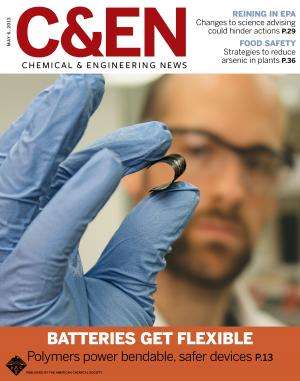Batteries that bend and flex will transform electronics, transportation

Imagine a TV screen that hangs on the wall like a poster and rolls up like a window shade—or a smartphone that can fold up and fit into a pocket. It may sound like science fiction, but those technological marvels are moving closer to reality, thanks to advances toward development of flexible batteries that could power a new genre of electronics devices. Those polymer, or plastic, batteries are the topic of the cover story in the current edition of Chemical & Engineering News (C&EN), the weekly newsmagazine of the American Chemical Society, the world's largest scientific society.
Mitch Jacoby, C&EN senior correspondent, focuses on the latest research involving organic polymers, which exhibit the key properties needed for the next generation of batteries. Those batteries will not just be bendable, but powerful, lightweight and made from inherently safe materials. And their uses would extend beyond consumer electronics to include electric vehicles and other transportation applications.
The article explains that lithium-ion technology likely will continue to be the mainstay, but today's flammable, liquid electrolytes need a safety upgrade. To restore lithium batteries' reputation after the recent Boeing 787 Dreamliner safety incidents and other fire-related concerns, scientists are searching for nonflammable, solid electrolytes. Scientists are confident that the obstacles to making flex batteries a reality can be overcome, the article indicates.
More information: The article is titled "Batteries Get Flexible".
Provided by American Chemical Society


















